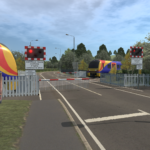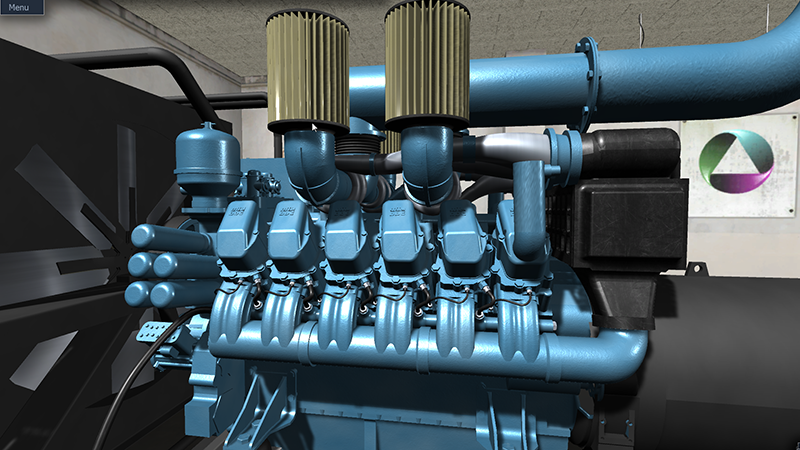Virtual, interactive 3D training has many benefits, one of which is that it can be deployed in the cloud, enabling organisations to train their employees wherever they may be, maintaining and enhancing their employee’s knowledge and skillsets. The importance and value of this accessibility of effective training where users can interactive with realistic virtual representations of real equipment has been highlighted with the current global situation around COVID-19 where access to real training equipment and travel to training centres is not possible.
But virtual, interactive 3D training solution have other benefits too and this blog discussing some of the main ones…
How Can Virtual Training Benefit You?
Our core team at Agility3 have an extensive background and capability in developing virtual, interactive training solutions, particularly to support training on the maintenance, service and operation of large and complex equipment. Much experience has been within the Defence industry, where the benefits of virtual training solutions for training on equipment such as jet fighters, military helicopters, UAVs and more, have been proven over many years. We want to help other industries who are manufacturing, maintaining and operating large and complex equipment, to realise these benefits too, but what kind of benefits are we talking about and how can they answer your burning questions?
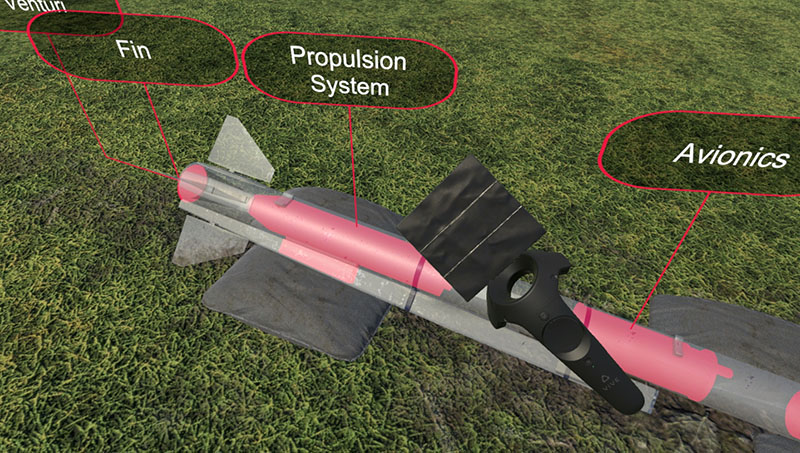

How Can I Make Training More Accessible?
Organisations that focus their training around access to real equipment or physical mock-ups are limited by their availability. If the real equipment or physical mock-ups are not available for training, then the core training cannot take place. In contrast to this, virtual training applications can be accessed whenever and wherever they are required, and a virtual representation of the equipment can be given to every trainee to access whenever they want or need. This leads to increases in capacity for the number of learners.
Virtual training can take place anywhere. This is enabled by the fact that the virtual training solutions we develop at Agility3 can be deployed via a range of platforms including:
- PC/laptop
- Mobile devices (tablet/phone)
- Large touch-screens
- Over the internet or through the cloud
- Virtual Reality
- Augmented Reality
This means that every learner can have their own copy and can learn effectively at their own pace. It is also possible to have team members training together collaboratively on the same virtual equipment from separate geographical locations. This remoteness has previously been considered more of a luxury and a happy coincidence of other benefits, however, more than ever it is an important addition and a great reason to consider virtual training.
How Can I Reduce Training Costs?
Whilst there is initial investment required to implement virtual training solutions, the cost savings that can be made in the long term are, potentially, very high and offer a clear Return on Investment. Some examples of cost saving areas are:
- Travel costs – virtual training can be delivered remotely and does not require the learner to travel to specific locations.
- Accommodation costs – supplementing hands-on training courses with virtual training can reduce the amount of time needed on a training course, thus reducing the cost of accommodation and subsistence for learners.
- Instructor time – larger numbers of trainees can be trained without the need to increase the numbers of instructors. It may also be possible to reduce the amount of instructor contact time required.
- Equipment downtime – hands-on training often requires real equipment which cannot be used for its main purpose whilst being used for training thus reducing productivity and representative physical mock-ups are expensive.
- Equipment breakages – if equipment is broken through training there are obvious cost implications. Reducing reliance and time needed training on real equipment or physical mock-ups reduces the chance of this happening.
Using virtual training, staff are able to learn at times to suit them and potentially learn more quickly, therefore reducing disruption to their day-to-day work and the indirect costs associated with having staff on training courses.
How To Improve Training Safety?
Safety is an obvious, yet supremely important, benefit. Training in a virtual environment protects the learner from potentially hazardous and dangerous scenarios whilst also preventing real equipment from being unintentionally damaged or broken. It enables mistakes to be made without the consequences that would occur in the real world. Having learners experience dangerous situations and things going wrong is very valuable for training but is challenging to achieve safely in the real world. Virtual training allows the learners to do this. This is especially important for training new recruits.
Can I Increase The Value Of Training?
Often, organisations we speak to only provide hands-on technical training on real or mock-up equipment, and they are unable to simulate a full range of potential faults and scenarios because it is dangerous, expensive or impractical to do so. Virtual training offers a solution to this issue and can provide trainees with the cognitive exposure to any possible scenario, enhancing the breadth and the value of the training experience.
Many companies supplement their hands-on training with e-learning modules, PowerPoints and/or PDF document. Whilst these can be helpful when delivered effectively, they typically involve the trainee having to read and digest a lot of information to try and understand the subject matter without actually putting their understanding into practice through interaction with the equipment. Much research exists, such as the “Cone of Experience” by Edgar Dale, shown in the image below, showing that humans learn best when “doing”. Replacing or complimenting e-learning with virtual training that involves the learner interacting with the equipment and carrying out procedures is the most valuable training available in the absence of the real equipment. This learning by “doing” enhances learning retention and helps to increase the speed of training and the throughput of learners.
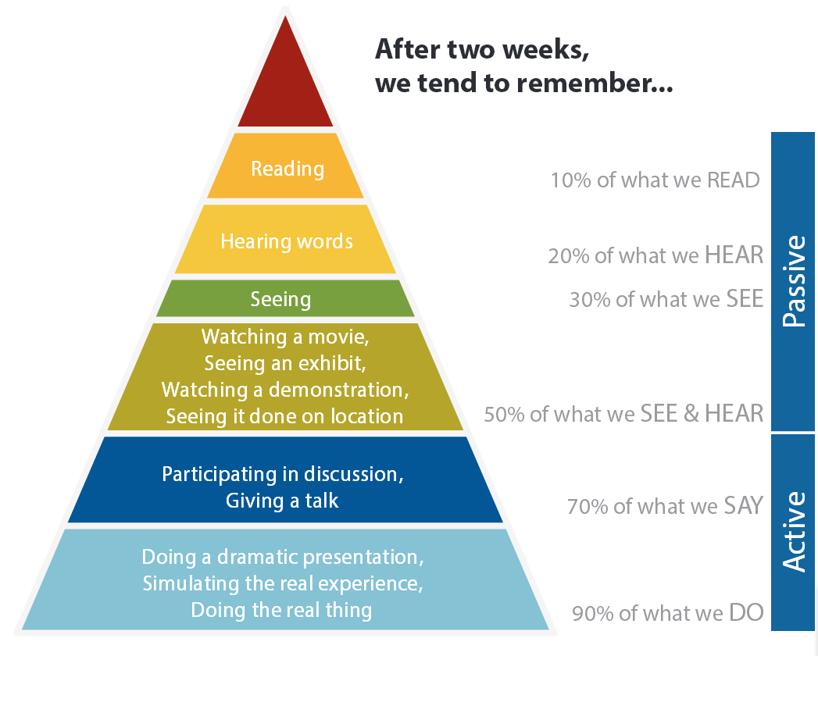
Compared to page-turning e-learning, training is also made more fun and enjoyable through virtual, interactive training and is more memorable for the learner.
How To Remotely Monitor Training?
The virtual training solutions we develop at Agility3 can include functionality to improve and enhance instructor monitoring. This includes features such as learner action tracking, the ability to virtually peek over the learner’s shoulder to monitor progress, integration with learning management systems and learner performance feedback. Learner performance information, such as that shown below enables instructors to see where the learner may need additional training or knowledge allowing them to tailor follow-on learning.
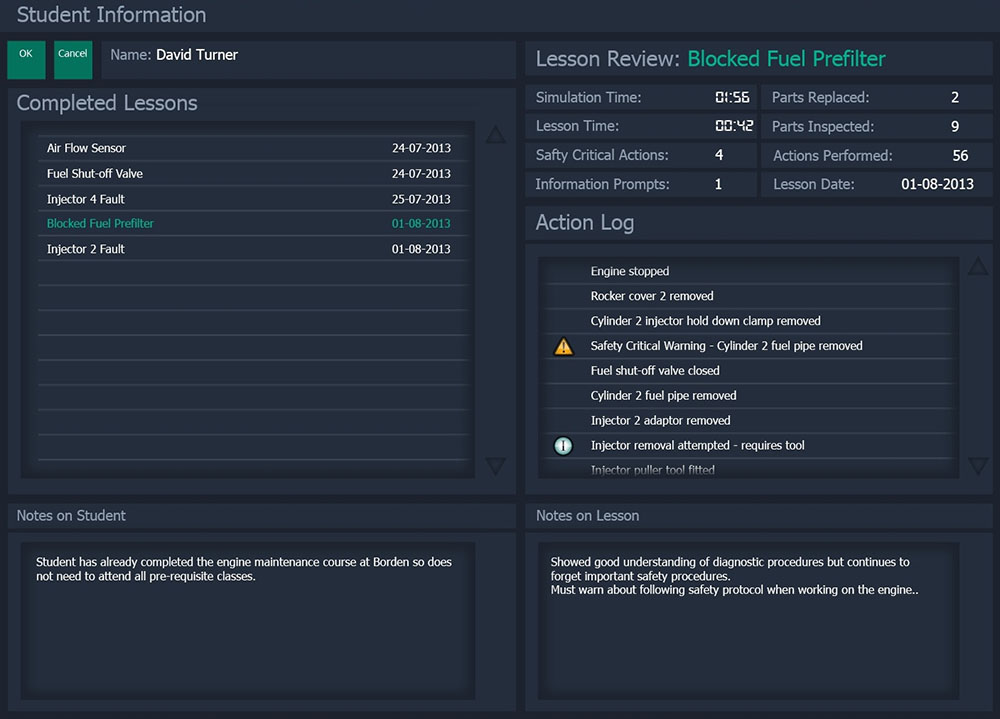
How To Make Training Accessible To Younger Employees?
It is well documented that there is, generally speaking, a lack of young people choosing an engineering related career and that there is a skill shortage in this area. As a result, organisations responsible for manufacturing, operating and/or maintaining highly engineered and complex equipment can struggle to acquire new recruits.
The virtual training applications we develop at Agility3 are built upon technology used within the gaming industry. These technologies are becoming ever more relevant and familiar with young people and organisations that are seen to be utilising these technologies as part of their training (and in other areas potentially) are likely to be deemed as innovative and interesting to young people. This can help attract and retain new recruits.
Summary
Nothing can completely replace hands-on practical equipment training, though hopefully this article has helped to reassure that virtual training solutions have an important part to play in the training of current and future employees for many industries. We actively encourage the blending of virtual training and physical training for best effect. The value that can be added by enabling realistic, interactive training through a range of deployment platforms is vast and is key when considering Returns on Investment.
This article was written by Louis Drakes, Business Coordinator at Agility3. If you would like to learn more about the virtual, interactive 3D solutions we develop at Agility3 and how they could benefit your training offering, please get in touch at louis.drakes@agility3.co.uk or call on (+44) 01438 488066. We look forward to hearing from you.



